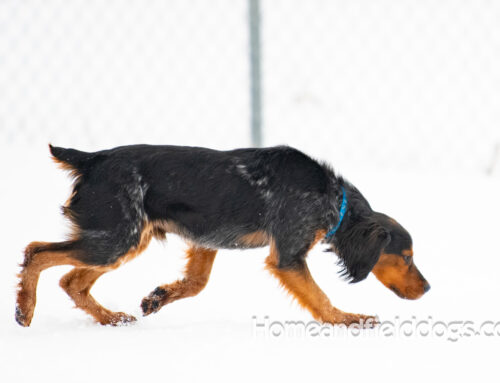Hello, fellow dog enthusiasts! Ever noticed your usually bold puppy suddenly treating the living room rug like it’s a lava pit? Or perhaps your adventurous little explorer now eyeballs the garden hose as if it’s a serpent from the depths? Ah, the bewildering world of puppy fear periods. But worry not! Your trusty guide through the peaks and valleys of dog care is here to demystify these spooky seasons and arm you with the knowledge to help your pup emerge braver than ever.
What Are These Fear Periods Anyway?
Let’s dive into the science behind the spook. Puppies typically go through two main fear periods during their development. The first one occurs between 8-10 weeks, right around the time many puppies settle into their new homes. Talk about timing, right? The second wave hits the shore between 6-14 months, with variations depending on the breed and individual dog. During these periods, puppies are more susceptible to being frightened by experiences and environments that they might have previously—or will later—find completely normal.
Why Do They Happen?
Evolution plays a bit of a trick here. These fear periods are essentially nature’s way of teaching young pups to be cautious in new situations, an invaluable lesson for survival in the wild. While our living rooms are far from the savannas our canine companions’ ancestors roamed, the instinctual playbook remains.
Manifestations of Mischief
During a fear period, your puppy might show signs of apprehension towards familiar people, balk at entering rooms they’ve been in hundreds of times, or become suddenly shy around other dogs. It’s like they’re seeing the world through a horror movie filter.
Charting a Course Through the Fear
Fear not (pun intended)! Here are some tried-and-true strategies to help your puppy navigate these choppy waters:
-
Stay Calm and Carry On: Your puppy looks to you for cues on how to react. If you treat the vacuum cleaner like it’s just another piece of furniture, chances are, your pup will start to adopt the same attitude.
-
Positive Reinforcement is Key: Encourage and reward bravery. A little treat for approaching that “scary” new person can go a long way.
-
Socialization with a Side of Caution: Continue to gently expose your pup to new experiences, but don’t force them into situations where they feel overwhelmed. Think of it as dipping toes in the water rather than diving headfirst.
-
Training Techniques: Basic obedience training can be a great confidence booster. Commands like ‘sit’, ‘stay’, and ‘come’ give them a sense of control and predictability.
-
Professional Help: Sometimes, a pup may need a little extra help navigating their fear. Certified dog trainers or behaviorists can offer tailored strategies to build confidence.
The Virtue of Patience
Remember, navigating fear periods is a marathon, not a sprint. Be patient, consistent, and supportive. Celebrate the small victories, and don’t get discouraged by setbacks. Your puppy is not giving you a hard time; they’re having a hard time.
A Call to Action for the Courageous
Now, armed with knowledge and strategies, you’re more than ready to stand by your puppy as they brave their fear periods. And remember, every challenge is an opportunity to strengthen the bond between you and your furry friend.
So, dear readers, let’s raise a generation of confident, happy dogs together. Share your fear-period triumphs and tips in the comments below or reach out to us with your stories. Who knows? Your tale of triumph might just be the beacon of hope for someone navigating their own stormy seas.
Here’s to fearless futures and the unbreakable bonds we forge along the way. Happy training, and remember, in the world of puppy raising, love is the greatest tool we have.






Leave A Comment